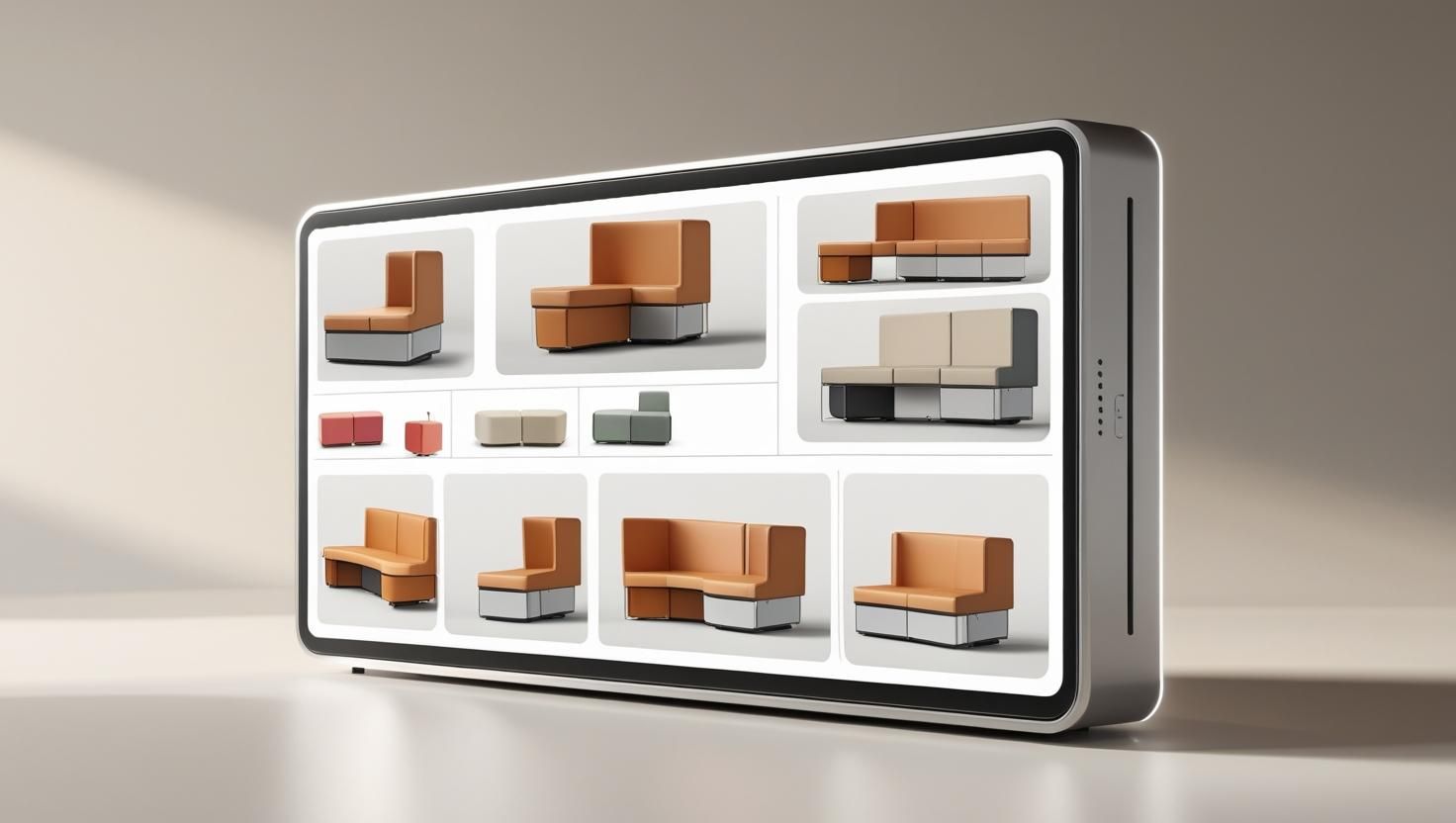Digital Meets Display
)
Standing out in furniture retail today means more than just being visible. For UK independents, it’s about showing up where your customers are, online and in-store, with a clear message, strong branding, and a smooth experience across all touchpoints.
As shopping habits shift and more customers search for inspiration and products online, building a meaningful connection across multiple channels is now essential.
Meeting Your Customers Where They Are
 Online platforms have become the primary route for furniture discovery and sales. From search engines and e-commerce sites to Instagram and Pinterest, your digital shopfront is now just as important as your physical one.
Online platforms have become the primary route for furniture discovery and sales. From search engines and e-commerce sites to Instagram and Pinterest, your digital shopfront is now just as important as your physical one.
To make the most of this, here are several practical steps that support visibility and engagement:
-
Targeted Social Media Advertising
Well-timed Facebook and Instagram campaigns using images of real homes can increase interaction and drive store visits. Focus on showing how your furniture fits into everyday spaces and lives. -
3D Visualisation and Augmented Reality Tools
Shoppers engage nearly 50% more with 3D images compared to static ones, according to Google research. Furniture businesses using 3D visualisation on their websites have reported conversion rate increases of up to 94%. Giving customers the chance to interact with your products in a three-dimensional space boosts confidence, encourages longer browsing, and can help reduce returns. -
Search-Optimised Evergreen Content
Create useful, long-lasting content that answers common customer questions. Style advice, care instructions, and customer reviews can support search engine visibility and reinforce trust. Focus on keywords UK furniture buyers are searching for, such as “customisable storage solutions” or “sustainable living room furniture.” -
Visual Discovery Platforms
Pinterest and similar platforms continue to influence buying decisions. Optimising your images with keyword-rich descriptions and clear product links can improve click-through rates and put your brand in front of new customers.
Personalisation and Technology
Today’s customers expect brands to recognise their preferences and tailor the experience accordingly. From AI-powered recommendations to personalised emails and immersive AR tools, digital personalisation is no longer a bonus—it is a baseline.
Research shows that 81% of shoppers prefer a personalised experience, and 70% are more likely to buy from brands that remember their history and preferences.
“Personalisation isn’t a marketing garnish, it’s the next operating system of retail. Powered by AI, and increasingly delivered via augmented and virtual reality, the new generation of successful independent retailers will be the ones that turn data into highly personalised, friction-free, value-rich customer experiences that forge compound loyalty and growth.”
Tom Puukko, CEO, Interior Intelligence
Customisation and Sustainability: Two Major Drivers
Across the UK, furniture buyers, especially younger shoppers, are placing greater value on tailored products. Modular sofas, flexible storage, and mix-and-match design options are all gaining momentum. Offering personalisation can help your business stand apart and cater to individual lifestyles.
At the same time, sustainability remains a key concern. Buyers are looking for responsibly sourced, recycled, and long-lasting materials. Clear product information and transparency around sourcing and production methods can build trust and influence purchasing decisions.
Quick Wins for Independent Retailers
Small steps can lead to significant impact. Here are some straightforward actions to support visibility, engagement, and sales:
-
Website Audit
Ensure your site is easy to navigate, fast-loading, and accessible. Clear descriptions, quality images, and mobile optimisation can improve both customer experience and search rankings. -
Consistent Branding
Align your tone, style, and visuals across your website, social media, and store. Consistency helps reinforce your identity and makes your brand easier to recognise and recall. -
Use of Analytics
Monitor which channels and content types generate the most engagement or sales. Focus your energy and budget where it makes the most difference. -
Blended Experiences
Host in-store events and promote them online. Offer virtual consultations or click-and-collect services. Give customers more than one way to interact with your brand.
Accessibility and Inclusion: Not Just a Legal Requirement
Around 20% of people in the UK have a disability, and two million live with sight loss. By making your website and digital channels accessible, through clear language, alt text, and user-friendly design, you not only meet compliance standards but also expand your customer base. Accessibility is good for business and good for people.
Managing Brand Visibility: What It Takes Today
Being visible in the digital age means being discoverable, memorable, and easy to buy from.
By using smart tools like 3D visualisation, investing in personalisation, and remaining consistent in your messaging, independent retailers can create experiences that resonate with today’s shoppers and support long-term brand value.
The most successful brands are those that meet customers on their terms, whether online, in person, or somewhere in between.
If you're looking to share ideas, learn from others in the trade, and raise your brand’s profile, join us at the Manchester Furniture Show. It’s a practical space to connect with peers and pick up useful perspectives that can move your business forward.
Register now and get involved.






